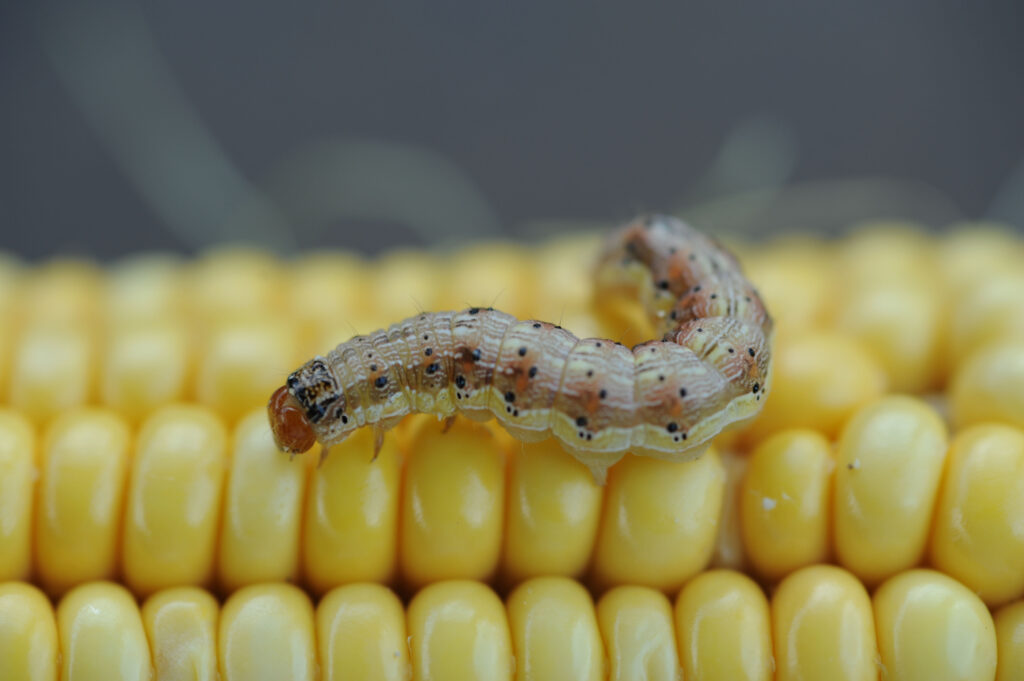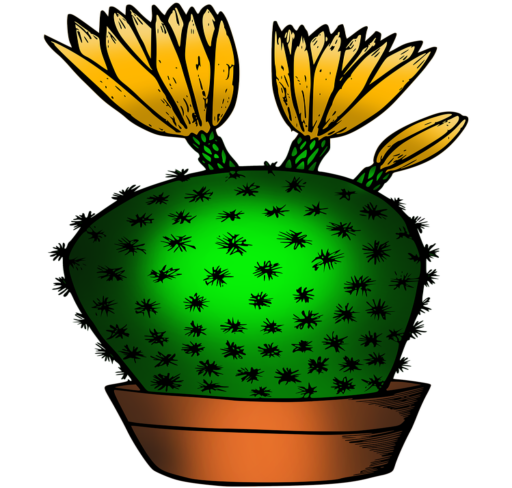Planting Corn

Corn is easy grown provided you have enough space and plenty of sun. However, these great stalks are wind-pollinated, so you need to plant in blocks to ensure pollination. As a result, a minimum 10 foot by 10 foot area should provide enough space to pollinate. The exception to this rule is ‘On Deck’ variety, which has been bred to grow in containers. If you are growing ‘On Deck’, choose a container that is at least 24 inches wide and deep and plant nine seeds evenly spaced.
Corn is classified as Sh2, SE, SU, or SY. Most importantly, these refer to the sweetness and how long it may be stored. Sh2 is is supersweet, lasts 4-6 days in the refrigerator and is more challenging to sow in cool soils; SE is sugar-enhanced and lasts over a week in the refrigerator; SU is normal sugary, more cool soil tolerant but with a shorter shelf life; SY combines SE and Sh2 traits. Isolate Sh2 corn varieties from others by planting seeds at least 250 feet apart, or select varieties that mature at least 2 weeks apart, so they will not cross pollinate.
When choosing a site plant on the north side of your garden so the tall plants do not shade other plants in your vegetable garden.
This warm season crop and should not be planted in cool soils. The non Sh2 varieties tend to be more tolerant of cool soils, but in general the soil should be about 65 degrees F or warmer.
Sow seed 1 inch deep, 5 to 6 inches apart in rows 2 to 3 feet apart.
Seedlings emerge in 7-14 days.
When seedlings are 3-5 inches tall and healthy, thin to 1 foot apart.
How to Grow Corn
Keep weeds under control during the growing season. Weeds compete with plants for water, space and nutrients, so control them by either cultivating often or use a mulch to prevent their seeds from germinating.
Keep plants well watered during dry periods to promote uninterrupted growth. They need 1-2 inches of rain per week for best production. Use a rain gauge to check to see if you need to add water. It is also a heavy feeder and will benefit from side dressings of fertilizer applied as directed through the growing season.
Corn Earworms

There’s nothing like eating freshly harvested ears – unless you find a worm when peeling back the husks! That unwanted intruder is usually the corn earworm.
Identification
These caterpillars vary widely in color and may be green, brown, pink, black or various shades between these colors, with light and dark stripes along its sides and back. The head is always a yellow or light brown color, without any spots. Eventually they grown to about to 1.5 to 2 inches long.
The adult corn earworm is a grayish-brown, night-flying moth with a wingspan of about 1.5 inches. Female moths prefer to lay their eggs on fresh corn silks but will also choose buds and growing tips of young corn if silks aren’t available. The tiny, light-yellow eggs are laid singly. By the time the eggs hatch in a few days, they have turned to a dark brown.
The little caterpillars crawl down the silks to the tip of the ear to feed on the maturing corn kernels. Since they are cannibalistic – meaning they will eat each other and the strongest or largest caterpillar wins – you typically will only find one in each ear of corn.
Corn earworm, also known as the tomato fruit worm and cotton bollworm, has a wide range of plants it feeds on besides corn. Other vegetables it will consume include tomatoes, peppers, beans, cabbage, and soybeans. They prefer corn, but late in the season when corn kernels are maturing and not as attractive, they will damage tomatoes and snap beans by eating into the fruits or pods.
Control in the Home Garden
There are several options for controlling corn earworm in the home garden, but if you’d rather not use insecticides, you can always just cut off the damaged parts of infested ears, as the portion not fed on by the caterpillar is still perfectly good.
Plant early. Sweet corn harvested before mid-August will have fewer, or no, earworms. Check the number of days from seed to harvest on the seed package and look for those that can be harvested in less than 70 days. Plant as early as soil temperatures are right for seed germination, typically 55°F for standard sweet corn and 65°F for Supersweet cultivars.
Experiment with cultivars. Try using a variety of sweet corn cultivars and planting dates to find which combination gives the most control. Corn varieties with tight husks at the ear tips are naturally more resistant to earworms.
Natural enemies. There are several natural enemies that attack corn earworm eggs. A number of tiny wasps parasitize the eggs, while minute pirate bugs eat the eggs. There are also wasps that attack corn earworm larvae and pupae; however, these beneficial insects are not numerous enough to provide acceptable control.
Use oil. If you only have a few corn plants, try using vegetable or corn oil for control. Even better, mix the oil with Bacillus thuringiensis var. kurstaki (BTk), sold as Dipel or Thuricide, or Neem. Mix 1 part Btk or Neem with 20 parts oil. Apply 5 drops of the mixture with an eyedropper to the tip of each ear. As the young worms travel from their hatching spot on the silk into the ear, they will suffocate as they move through the oil.
Monitor for pests and diseases. Check with your local Cooperative Extension Service for pest controls recommended for your area.
Suckers tend to form at the base of the plants; they help support the stalks and make food for the plant. The stalks may have to be staked in windy areas, but in general they are self-supporting.
Sunflowers are good companion plant. Direct sow sunflowers in rows parallel to corn rows to help separate corn varieties that need isolation from each other. Choose sunflower varieties of comparable height to the corn plantings. The sunflower border, with vibrant hues in russets to golden-yellow, will add sparkle next to the almost all-green corn plot. The ‘Three Sisters’ (corn, bean and squash) are traditional companion plantings with Native American gardeners.
Corn Seeds – Golden X Bantam, Vegetable Se…
Golden X Bantam is one of the best known hybrid corn Seeds for both home and commercial… [More]
Harvesting and Preserving Tips for Sweet Corn
Timing is everything with sweet corn. The kernels begin to lose sweetness and flavor the instant the ear is picked, so the great advantage of growing your own is so you can wait until the last minute. The traditional rule was to get the pot of water boiling to cook the corn and then go out and pick it. Sweet corn is ready to eat when you can feel full, rounded kernels beneath the husk; the silk at the top of the ear is drying out; and a squished kernel produces a milky sap.
The ear is fat.
The silk is dry and brown at the top. The farther down the earth dry silk goes, the riper the ear. By difference, the silk on an ear that isn’t ready to be harvested is soft and has a rose color.
The ear is slanting away from the stalk, practically as if it’s tempting you to pick it off.
The time will come when you’ll find yourself observing that the corn stalks that are higher than you and wondering if the time is right to snap those ears off for supper. Well, here are the signs you need to make the great choice. First, what do the silks at the uppermost area appear like?
Are they brownish, dry, and dried-up? Or are they still pallid yellow and glossy? After corn silks are pollinated by the tassels at the uppermost of the stalk, they’ll shrivel up as ears mature. This occurs about three weeks after the silks form. The corn kernels become ripe just about the same time as the silks become brown and shriveled.
To be assured you don’t pick an ear before its ready, you may want to check the kernels themselves. Make as small cut vertically into one of the ear’s coverings. While do want to get to the kernels, keep the cut tiny so that you don’t unintentionally make it easy for vermin to sneak in.
Now, pick a kernel that’s a few down from the top of the ear because those small top ones sometime never fill out; so, you could be tricked. You’re looking for firm, filled-out corn kernels. Use your fingernail to pierce a kernel. The liquid inside is going to communicate to you a lot about your timing. If that comes out is very clear and watery, they’re not ripe yet. If the liquid is completely translucent, you’ve waited too long.
After a season or two guesstimating and testing, you’ll get very good at evaluating your corn’s readiness just by looking at the kernels. Because you have about three days after they become ripe before the sugars in the kernels turn to starch, experienced gardeners have customarily practiced cooking corn as close to harvest as possible, but some of the newer Supersweet varieties have made that less of a concern.

- Ears are ready to harvest about 17-20 days after the silks appear and the kernels should be firm. Open an ear and pierce a kernel with your fingernail. If the liquid is watery, it is not ripe yet. It should be milky. If it is creamy, it is overripe and will not taste as sweet.
- Firmly grip the ear and twist downward to harvest. Take care not to break the plant when harvesting the first ear, or the second ear will not develop. Most corn produces two ears.
- Store unhusked corn in the fridge and consume as soon as possible. Sh2 and SE varieties keep the longest in the fridge, up to one week.
- Corn freezes well after blanching and may also be canned using a pressure cooker. Immature ears may be pickled.
